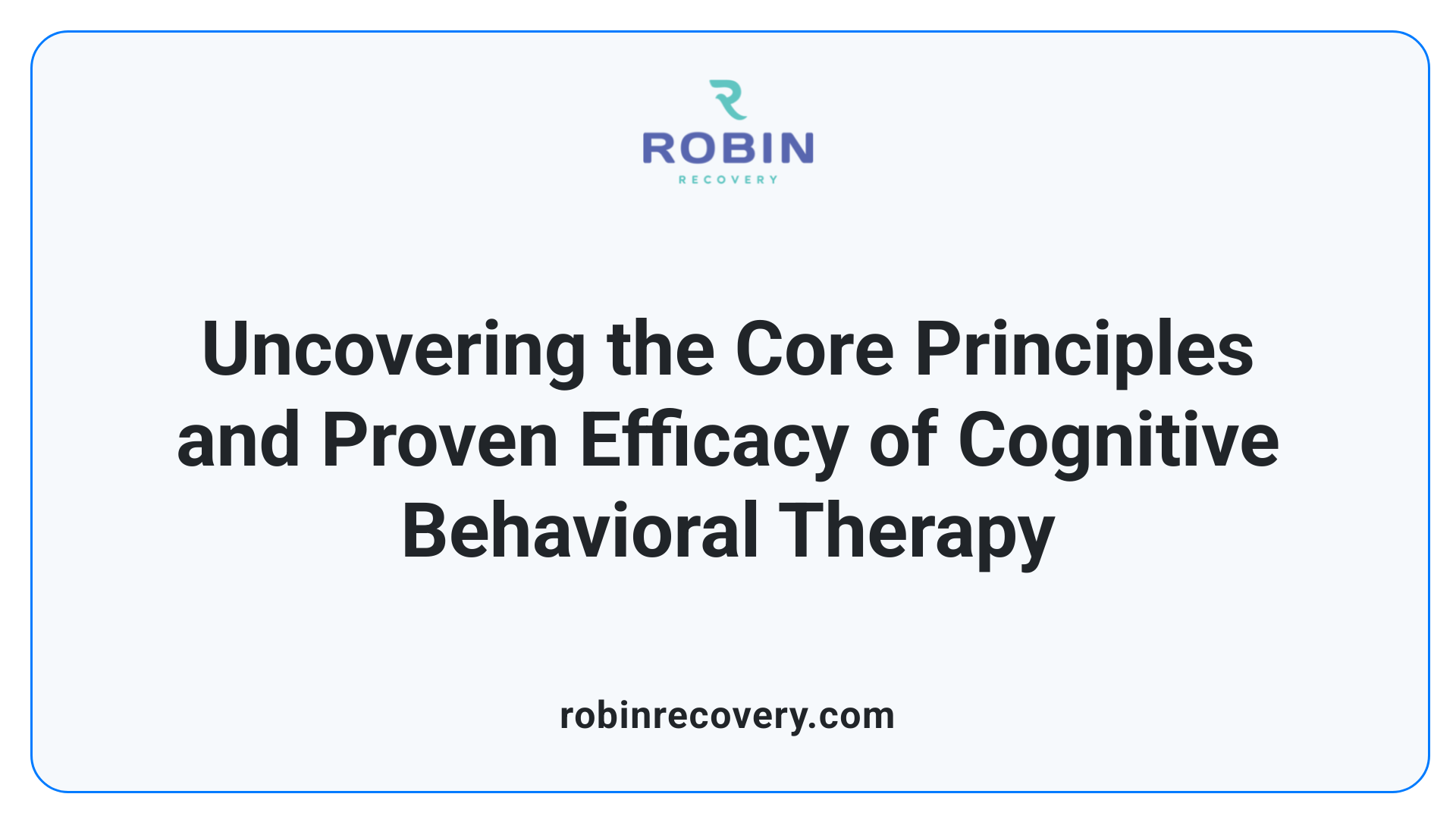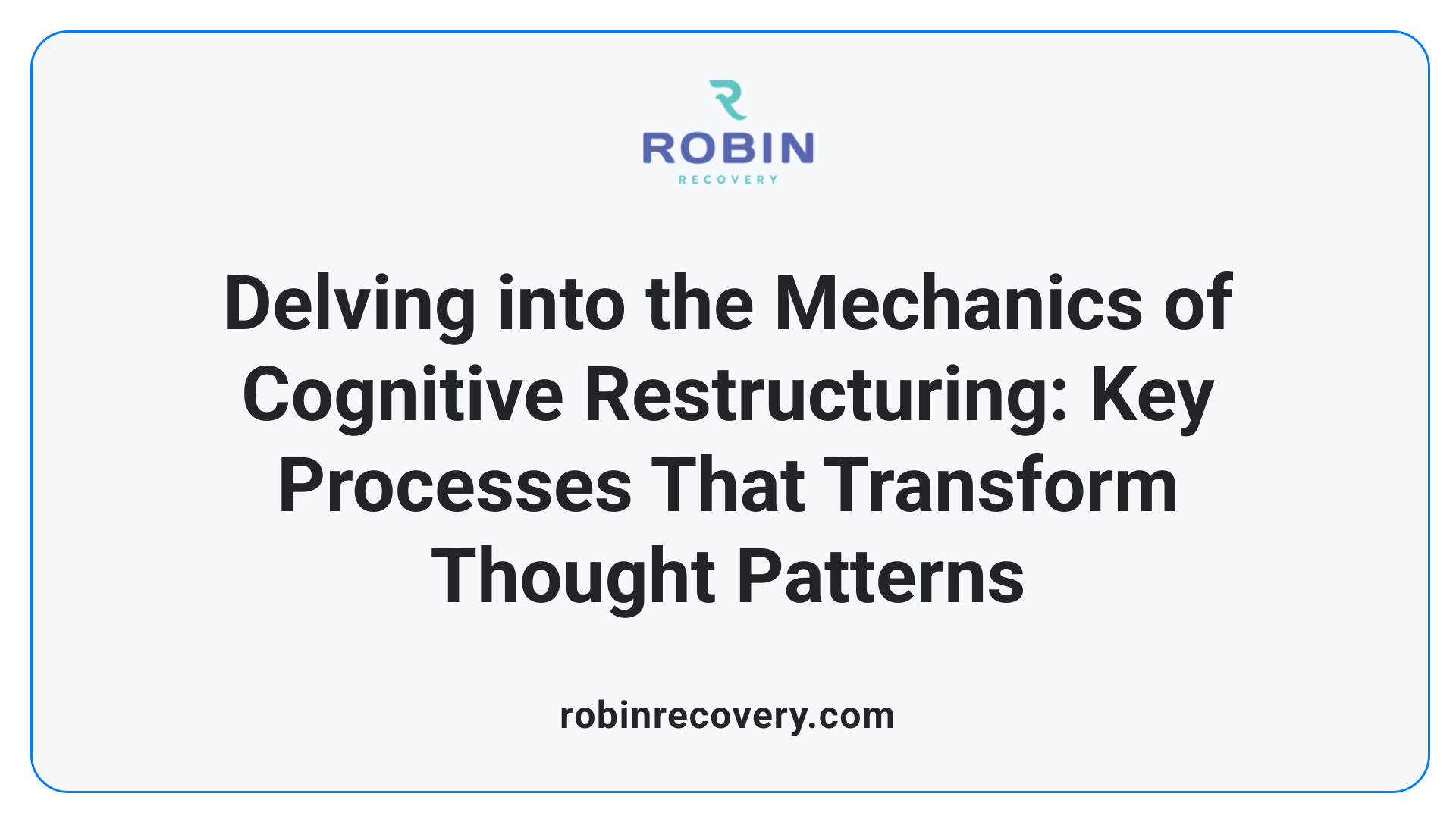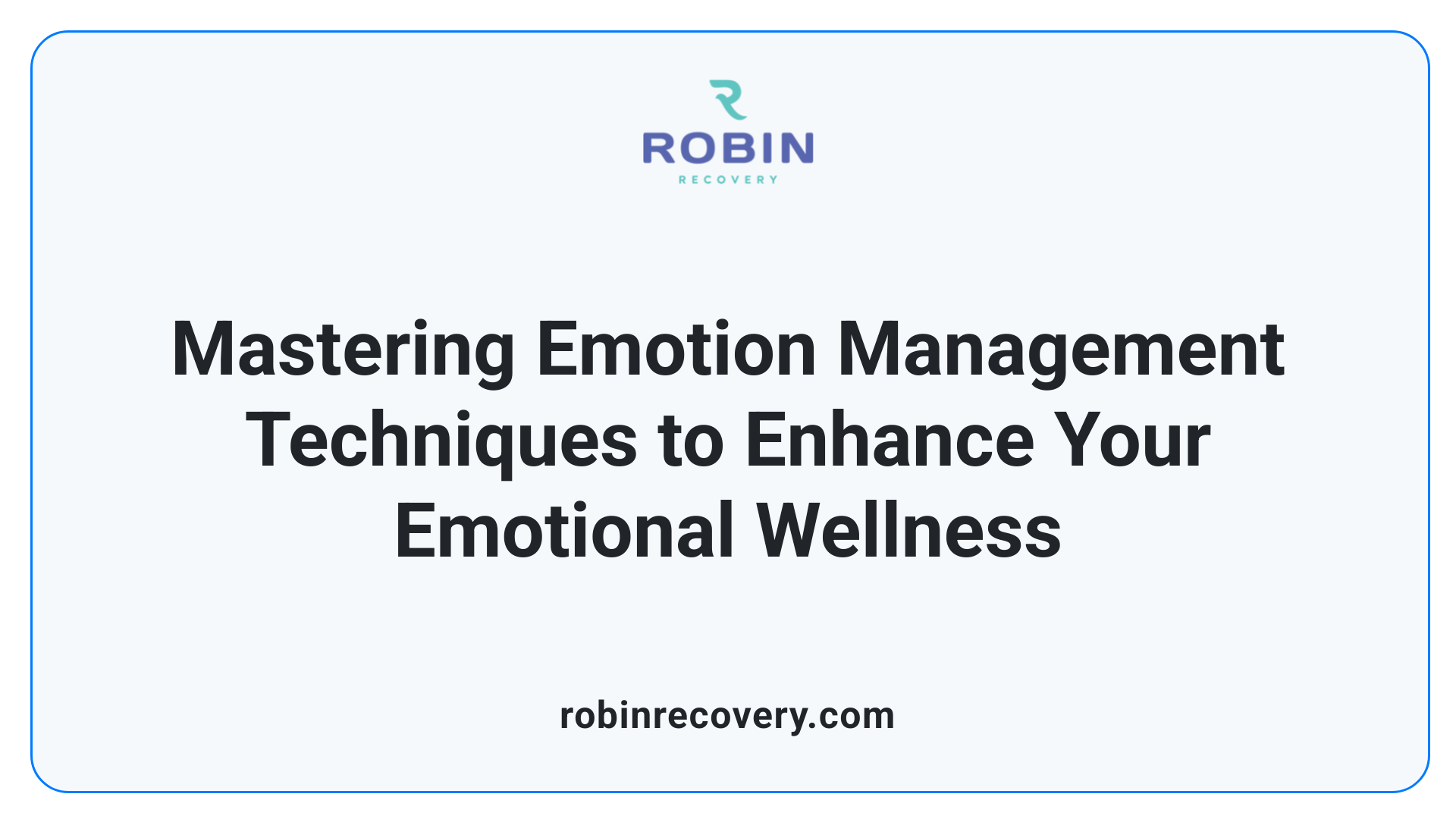How Cognitive-Behavioral Therapy Can Help You Change Negative Thought Patterns

Introduction
Cognitive-Behavioral Therapy (CBT) is a cornerstone approach in mental health treatment, renowned for its effectiveness in tackling negative thought patterns. By exploring the dynamic interplay between thoughts, emotions, and behaviors, CBT provides a structured framework for individuals seeking to reclaim their emotional well-being. This article delves into how CBT helps in reshaping detrimental thought processes into constructive ones, offering insights and practical strategies that can lead to personal growth and improved mental health.
The Principles and Efficacy of CBT

Understanding how CBT operates
Cognitive Behavioral Therapy (CBT) is a structured, goal-oriented therapeutic approach aimed at transforming negative thought patterns into healthier ones. At its core, CBT operates on the principle that our thoughts, emotions, and behaviors are interconnected. This means that understanding and modifying negative thoughts can lead to positive changes in mood and behavior.
CBT employs techniques such as cognitive restructuring, where individuals learn to identify and question distorted thinking and replace it with balanced thoughts. For example, reframing a thought from "I failed because I am useless" to "I didn’t do my best, but I can improve" can foster a healthier self-view.
Additionally, CBT encourages the use of thought records to track negative thoughts and their triggers. This practice helps individuals assess the validity of these thoughts and implement strategies like reality testing, which fosters a more realistic outlook.
Effectiveness of CBT in mental health management
Research indicates that CBT is highly effective for a variety of mental health conditions, achieving an effectiveness rate of about 85%. It has proven beneficial for people dealing with depression, anxiety disorders, PTSD, and even chronic pain. The structured nature of CBT, along with its focus on practical skills, empowers individuals to break the cycle of negative thinking and enhances their overall well-being.
Through the application of CBT techniques, such as activity scheduling and exposure therapy, clients are encouraged to engage in positive behaviors, making CBT a comprehensive approach to mental health management. It equips individuals not only to understand their mental health issues better but also to actively work towards improving their emotional stability and resilience.
How CBT Transforms Thought Patterns
How does cognitive behavioral therapy change negative thought patterns?
Cognitive Behavioral Therapy (CBT) is designed to transform negative thought patterns by restructuring the cognitive processes underlying an individual's perceptions and reactions to situations. This transformation begins with identifying and challenging distorted thinking patterns such as catastrophizing, mind-reading, and polarized thinking. An essential aspect of CBT is engaging in exercises that involve writing down negative thoughts, allowing individuals to examine these thoughts critically and dispute them with objective facts.
One of the key techniques used in CBT is cognitive restructuring. This process encourages individuals to replace distorted thoughts with more balanced and realistic ones. For example, changing a thought like "I failed that test, so I am a failure" into "I didn’t pass this test, but I can learn from my mistakes and improve in the future" fosters a healthier mindset.
Additionally, techniques like mindfulness and thought records help individuals remain present and aware of their thought processes. Mindfulness practices support disengaging from harmful thought cycles, while journaling allows for tracking negative thoughts, helping to clarify their triggers and impacts.
The connection of thoughts, feelings, and behaviors
CBT emphasizes the interconnection between thoughts, feelings, and behaviors, illustrating how negative thought patterns can lead to adverse emotional responses and unhelpful behaviors. By changing one element of this triad, individuals can effectively alter the others. For example, confronting fears through gradual exposure and behavioral experiments can lessen anxiety and enhance feelings of empowerment.
Moreover, CBT encourages self-monitoring and cognitive reframing, allowing individuals to recognize when their thoughts are impacting their emotions and actions negatively. This holistic approach empowers them to cultivate healthier thinking patterns, ultimately improving their emotional well-being and daily functioning.
Understanding Cognitive Restructuring

What are the steps in cognitive restructuring?
Cognitive restructuring is a vital process in Cognitive Behavioral Therapy (CBT) focusing on transforming negative thought patterns into more balanced and functional ones. The steps involved in cognitive restructuring typically encompass four key actions:
- Identify the Trigger: Begin by pinpointing the specific situation that leads to the upsurge of negative thoughts or emotions.
- Recognize Automatic Thoughts: Pay attention to the automatic negative thoughts that surface in response to this situation, along with the feelings and behaviors these thoughts provoke.
- Evaluate the Thoughts: Analyze these negative thoughts critically. Consider both the supporting evidence for these thoughts and any contradictory evidence that disputes their validity.
- Challenge and Replace: Finally, challenge these negative thoughts and substitute them with more balanced, constructive alternatives. This step aims to encourage healthier thinking patterns.
Role of Cognitive Restructuring in Mental Health Improvement
Cognitive restructuring plays a significant role in enhancing mental health by reducing the impact of cognitive distortions that can lead to conditions like anxiety and depression. By enabling individuals to recognize and reformulate unhelpful thoughts, cognitive restructuring contributes to improved emotional regulation and resilience.
Through practicing these steps, individuals learn to manage their thoughts more effectively, leading to better emotional responses. Consequently, this practice not only alleviates symptoms of anxiety and depression but also boosts self-esteem, fostering personal growth and development. Here’s a summary of the cognitive restructuring process:
StepActionOutcome 1. Identify the Trigger Pinpoint the upsetting situation Awareness of what triggers negative thinking 2. Recognize Automatic Thoughts Notice the automatic responses Understanding personal negative thought patterns 3. Evaluate the Thoughts Analyze evidence for/against thoughts Clarity on the validity of thoughts 4. Challenge and Replace Substitute with balanced alternatives Formation of healthier thinking habits
By effectively walking through these steps, individuals can break negative cycles and embrace a more positive outlook on life.
Techniques in Cognitive Restructuring

What are examples of cognitive restructuring techniques?
Cognitive restructuring techniques are methods used to help individuals identify and challenge negative thoughts and cognitive distortions. Some commonly employed techniques include:
- Socratic Questioning: This involves engaging individuals in a series of questions that assess the validity of their thoughts. By systematically questioning beliefs, clients gain clarity and discover inaccuracies in their thinking.
- Decatastrophizing: This technique assists clients in managing anxiety by exploring and rationalizing worst-case scenarios, reducing the fear associated with those thoughts.
- Putting Thoughts on Trial: Clients argue for and against their negative thoughts, which promotes a balanced viewpoint on their beliefs.
Worksheets such as the Cognitive Restructuring Worksheet and the Dysfunctional Thought Record are valuable tools in facilitating the practice of these techniques, encouraging individuals to reflect on their thoughts and develop healthier responses.
How effective are these techniques?
Research indicates that cognitive restructuring techniques can lead to considerable improvements in mental health, particularly for individuals facing anxiety and depression. By challenging distorted thinking patterns, clients learn to replace these with more positive and realistic thoughts.
These techniques not only alleviate symptoms associated with mental health conditions but also enhance emotional regulation and increase self-esteem. With an effectiveness rate of 85%, cognitive restructuring proves to be a vital component in the therapeutic process of Cognitive Behavioral Therapy (CBT), fostering better mental health and personal growth.
Managing Emotions with CBT

Impact of CBT on Emotion Management
Cognitive Behavioral Therapy (CBT) significantly influences how individuals manage their thoughts and emotions by increasing self-awareness about negative thinking patterns. This awareness is crucial, as negative thoughts often lead to heightened emotional distress. By recognizing these patterns, individuals can reshape their beliefs and perceptions, enabling them to respond more effectively to challenging situations.
CBT typically encompasses structured engagement over 5 to 20 sessions, where patients work with therapists to identify troubling thoughts and emotions. Homework assignments like journaling ensure that skills developed in therapy are reinforced in daily life, promoting ongoing emotional growth.
Mechanisms of Emotional Improvement
CBT employs various techniques to enhance emotional well-being. These include:
- Cognitive Restructuring: Challenging and reframing negative thoughts into more balanced and realistic perspectives.
- Behavioral Activation: Encouraging engagement in rewarding activities to improve mood.
- Mindfulness Practices: Fostering present-moment awareness to manage stress effectively.
- Journaling and Thought Records: Tracking thoughts and moods to identify patterns and facilitate cognitive shifts.
Through these mechanisms, CBT helps individuals break the cycle of negative thinking, improving emotional responses and nurturing healthier coping strategies. This approach not only aids in treating various mental health disorders like anxiety and depression but also empowers individuals to take control of their emotional health.
Cognitive Distortions and CBT
Understanding cognitive distortions
Cognitive distortions are biased or inaccurate thought patterns that negatively influence emotions and behaviors. Common examples include:
- Black-and-white thinking: Viewing situations in extremes with no middle ground.
- Catastrophizing: Expecting the worst possible outcome in any situation.
- Overgeneralization: Drawing broad conclusions based on a single incident.These distortions can lead to increased anxiety, depression, and hinder personal growth.
CBT strategies to combat distortions
Cognitive Behavioral Therapy (CBT) offers effective strategies to combat these cognitive distortions through techniques such as cognitive restructuring. This method helps individuals identify and challenge unproductive thoughts, enabling them to transform these beliefs into more balanced and realistic perspectives.
For instance, through techniques like thought recording and Socratic questioning, clients examine the evidence supporting their negative thoughts, developing alternative viewpoints. By doing so, individuals can lower their stress levels and enhance their mental health. Ultimately, the process of cognitive restructuring not only enriches emotional well-being but also fosters healthier attitudes towards everyday challenges, empowering individuals in their day-to-day life.
Practical Applications of CBT Techniques
What practical strategies or exercises can be used to apply CBT techniques to alter negative thoughts?
To put Cognitive Behavioral Therapy (CBT) techniques into action, individuals can engage with a range of practical exercises designed to identify and combat negative thought patterns.
Cognitive Distortion Worksheets:
These structured worksheets help individuals recognize harmful thoughts, such as "I’m worthless" or "I can’t get things together." By categorizing these thoughts, individuals gain insight into their cognitive distortions.
Mood Journaling:
Journaling is a great tool for tracking thoughts and moods over time. This practice can help individuals pinpoint triggers for negative emotions, facilitating a better understanding of their emotional responses.
Behavioral Experiments:
By conducting behavioral experiments, individuals can test the reality of their negative thoughts. For instance, if someone thinks, "I'll embarrass myself if I speak in public," they can practice speaking in front of a small audience to see that their fear of catastrophic outcomes is often unfounded.
Worry Exploration Questions:
This technique encourages cognitive restructuring by helping individuals dissect their worries and distinguish between irrational fears and realistic outcomes.
Implementation of CBT in daily life
Integrating CBT strategies into daily life enhances progression in rethinking negative thought patterns. Practicing daily journaling and consistently challenging cognitive distortions can make a significant difference in one’s thought processes.
Additionally, utilizing activities like mood tracking or exposing oneself gradually to feared situations fosters resilience and encourages active participation in overcoming negative self-talk. By continuously applying these techniques, individuals can cultivate a healthier mindset, improve emotional well-being, and promote personal growth.
Incorporating Mindfulness in CBT
Role of mindfulness within CBT
Mindfulness plays a crucial role in Cognitive Behavioral Therapy (CBT) by promoting self-awareness and fostering a non-judgmental acceptance of one's thoughts and feelings. It involves techniques that help individuals stay present, allowing them to observe their thoughts without becoming overwhelmed by them. These practices can assist in identifying negative cognitive distortions and the triggers associated with them.
Mindfulness encourages individuals to acknowledge their thought patterns without immediate reaction. This creates space for critical reflection and enables them to engage in cognitive restructuring – a key CBT technique focused on modifying harmful thought processes.
Benefits of mindfulness techniques
Incorporating mindfulness practices offers numerous benefits within the CBT framework. One significant advantage is the reduction of stress and anxiety. Techniques like deep breathing, meditation, and relaxation exercises empower individuals to manage their emotions effectively.
Mindfulness also enhances emotional regulation and cognitive flexibility, allowing individuals to reframe negative thoughts into balanced perspectives. Additionally, it helps in developing a compassionate internal dialogue, combating negative self-talk. By integrating mindfulness into CBT, clients can achieve better mental resilience, leading to an overall improvement in their emotional well-being.
Benefit Description Examples Stress Reduction Techniques reduce physiological stress responses Deep breathing, body scans Improved Emotional Regulation Helps individuals manage their feelings more effectively Mindful observation, journaling Enhanced Cognitive Flexibility Fosters the ability to view situations from multiple perspectives Guided imagery, reflective practices Development of Compassion Encourages a kinder approach to oneself and others Gratitude journaling, affirmations
Effects of CBT on Personal Growth and Emotional Wellness

Overall impact of CBT on personal development
Cognitive Behavioral Therapy (CBT) plays a significant role in personal growth. By addressing negative thought patterns, individuals can develop healthier cognitive habits that enhance their decision-making abilities and interpersonal relationships. CBT promotes self-awareness, allowing individuals to break down overwhelming problems into manageable parts. This skill fosters resilience, encouraging a proactive approach to challenges instead of a reactive one.
Moreover, CBT equips individuals with practical coping strategies that extend beyond therapy sessions. For instance, techniques like journaling and mindfulness contribute to sustained self-reflection and emotional regulation, leading to long-term personal development.
Emotional benefits of CBT
The emotional benefits of CBT are profound. By challenging cognitive distortions, individuals can alleviate symptoms of anxiety, depression, and low self-esteem. CBT helps in reframing negative thoughts, transforming self-perception from a critical viewpoint to one that is more compassionate and optimistic.
Furthermore, as individuals learn to manage stress through relaxation techniques and positive affirmations, they often experience improved mood and motivation. These emotional enhancements foster a healthier self-image, allowing individuals to engage more fully in both personal and professional realms. The structured nature of CBT, combined with its focus on the present, leads to significant improvements in emotional wellness.
Conclusion
CBT offers a powerful toolkit for anyone seeking to challenge and change negative thought patterns. Through structured methodologies, such as cognitive restructuring, mindfulness, and practical exercises, CBT empowers individuals to take control of their mental health journey. By fostering healthy, realistic thinking, CBT not only enhances emotional well-being but also supports personal growth and resilience. Its effectiveness across a variety of mental health issues makes it a pivotal technique in psychological therapy, offering hope and tangible results for those willing to engage with the process.
References
- 24 Cognitive Behavioral Therapy Techniques for Negative Thoughts
- Cognitive Restructuring: Techniques and Examples - Healthline
- CBT and Negative Thought Patterns | Your Journey Through
- Turning Negatives Into Positives With Cognitive Behavioral Therapy!
- How Cognitive Behavioral Therapy Can Help You Overcome ...
- CBT: A way to reshape your negative thinking and reduce stress
- Cognitive Restructuring Techniques for Reframing Thoughts
- Reframing unhelpful thoughts - Every Mind Matters - NHS
